How I addressed post-launch feedback for Wilderplace

A few big problems with Wilderplace didn’t become clear until after launch. Reviews from Steam players and professional critics were more honest than the (still very useful!) feedback from our small group of testers whom mostly knew me personally. Feedback came in other forms as well: DM’s and emails from stuck or frustrated players, and sudden access to real player metrics. All this feedback brought clarity to Wilderplace’s design flaws.
I took the feedback to heart and set out to improve things. I asked myself two questions:
- How can I make this game more commercially appealing? It needs to be easy to understand, unique, and satisfying to play. “Fun”, basically.
- How can I make this game a more successful work of art? It needs to stay true to its core ideas, and deliver a meaningful experience.
Balancing these two goals is tricky - it’s easy to identify changes that would make the game more approachable, but at the cost of diluting the game’s vision. In this post, I talk through a set of problems and the fixes I implemented, and also touch on a couple problems I chose not to fix.
Problem 1: Wilderplace’s aesthetics compete with it’s gameplay
I’m happy with how Wilderplace looks. The visuals reinforce both the game’s pensive-yet-playful mood and it’s broader themes like finding beauty in imperfection. Actually playing the game requires carefully observing the arrangement of pieces in a level. I got feedback that the combination of isometric perspective and irregularly-shaped tiles made it hard to interpret the game’s grid. I decided to clean up the visuals to address this feedback. Here’s a before and after:
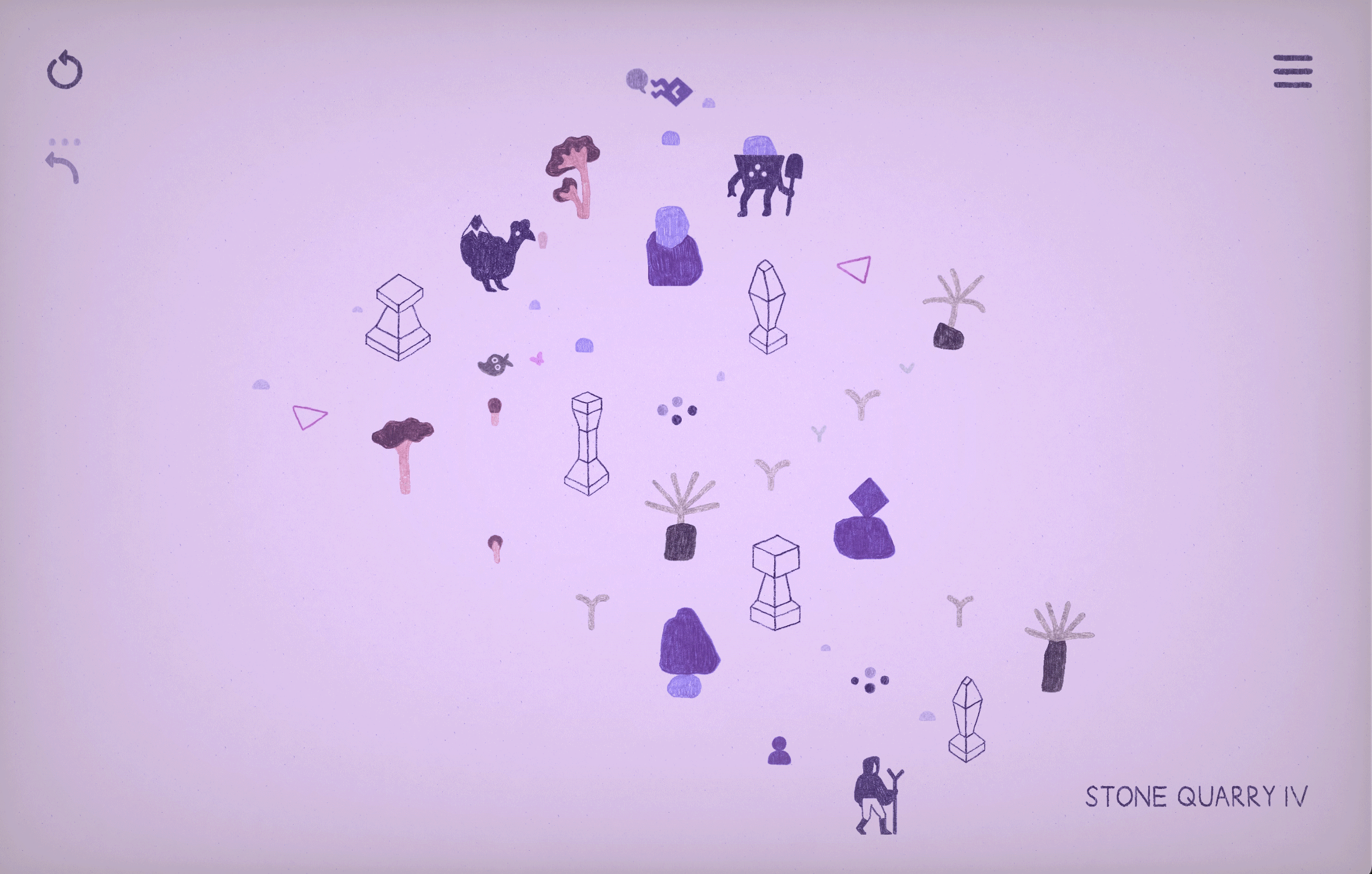 Before 1.2
Before 1.2
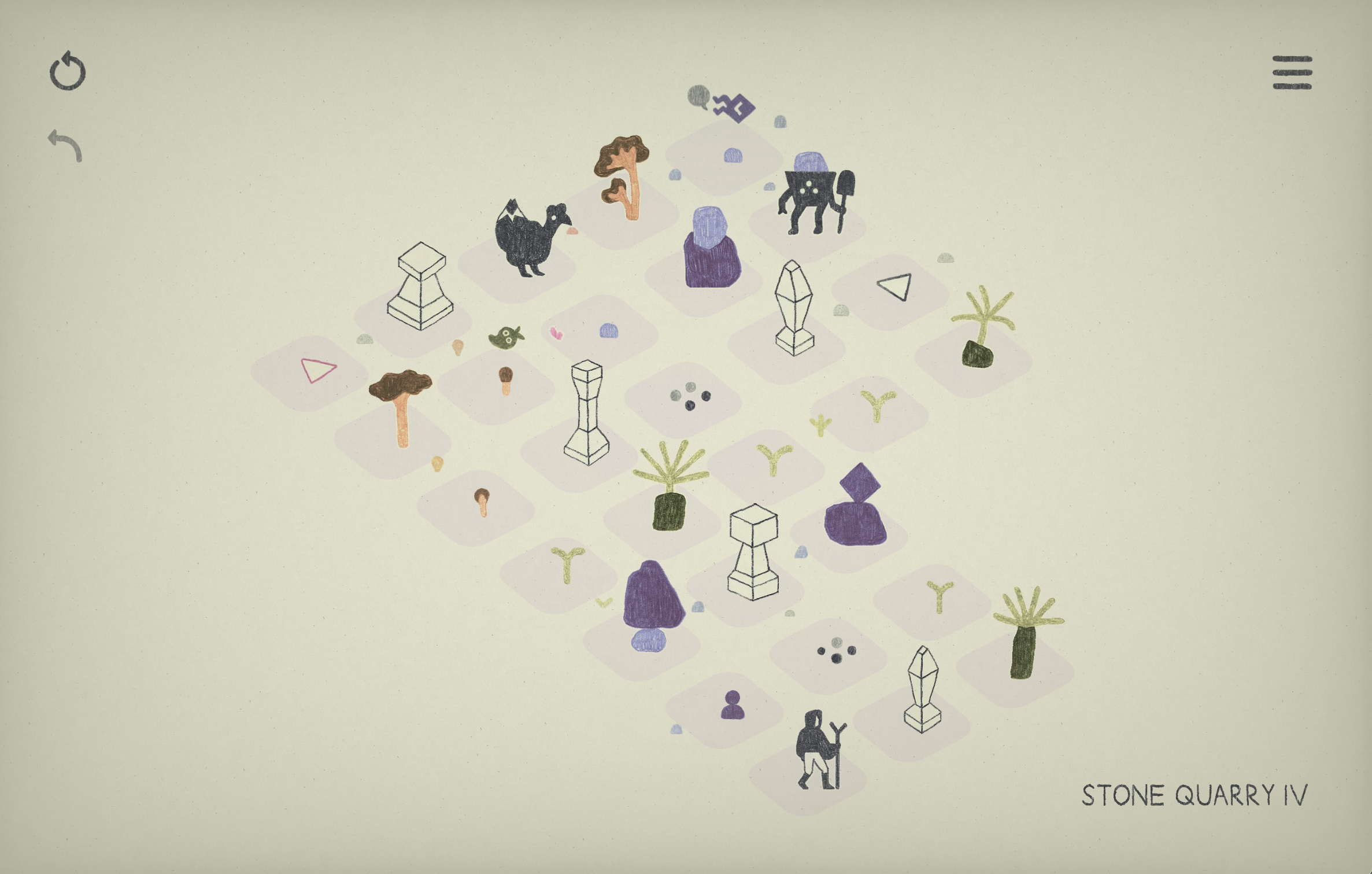 After 1.2
After 1.2
Not only is the new version easier to read, I also think it looks better. What did I do?
- I lowered the perspective angle from 45° to 52.5°, bringing objects closer together and preventing groves from getting cut off by the screen.
- I added background fills behind tiles, making the grid easier to read.
- Instead of using color filters for visual identity, I colored background tiles. This preserved the original drawings and kept the colors consistent throughout the game.
- I adjusted the placement of debris like grass and stones, making them more uniform and reinforcing the grid rather than obscuring it.
Problem 2: Wilderplace breaks too many genre conventions
Most players approach Wilderplace like a puzzle game, but players expecting certain quality of life features found in other modern puzzlers, like unlimited undo and fast travel, were disappointed.
I conceived of Wilderplace as a hybrid Metriodvania and Puzzler, where traversal into and back out of levels, without being able to reset them, was fundamental to how the game plays. Carefully manipulating a level, and later dealing with the consequences, was at one point a core part of the game. As Tom and I built out levels, we found that keeping to this design made it hard to make great puzzles during the player’s first trip through them. Plus, we really struggled to ensure players wouldn’t get soft-locked when they needed to backtrack. We decided to focus on great puzzles, and gave up on a more open, backtrack-heavy design.
We shipped a game that still had vestiges of the original idea: for example, on launch there was no fast travel, no way to reset and replay puzzles, and an undo ability limited to only three steps. The next version of Wilderplace introduces two major changes:
-
Players will now encounter The Monument to the Auspicious Cloud about one fifth of the way through the game, which unlocks fast travel. No more slogging through levels you already cleared. Now perfectionists can replay levels until they clear them in the least possible moves and completionists can seek out every secret. During the end game sequence where you do need to backtrack, the Auspicious Cloud is disabled.
-
Undos are now unlimited. There was never a technical reason to limit them to three. I had some design reasons: I wanted each move to feel impactful, and I felt like some levels have a clockwork quality that makes starting from the beginning beneficial. It turns out, for many experienced puzzle gamers, no unlimited undo is a deal breaker. I got more than one email asking about it specifically. I decided to try out unlimited undo for a while, and I thought I’d hate it but in practice it just makes the game more fun to play.
Problem 3: Too few players finished the game
Metrics show that only about 5% of players put in enough play time to get through all the game’s content. I even noticed that some of the professional reviewers didn’t finish the game. During development, I stressed that the game wouldn’t have enough, so we kept on adding. We released a game with over 170 levels. In retrospect, we should have focused more on editing and improving a smaller set of levels. The low completion rate is especially disappointing because the end game has some twists that I wish more players could experience.
Since launch, Tom and I managed to review the whole game and edit it down. We removed thirteen of the least engaging puzzles, and streamlined dozens more. Players who start a new Wilderplace run today will experience the improved version of the game. If you already have an active save, you’ll be locked to the old map until you restart your run.
Here are three examples of puzzles we edited along with some rationale behind the changes:
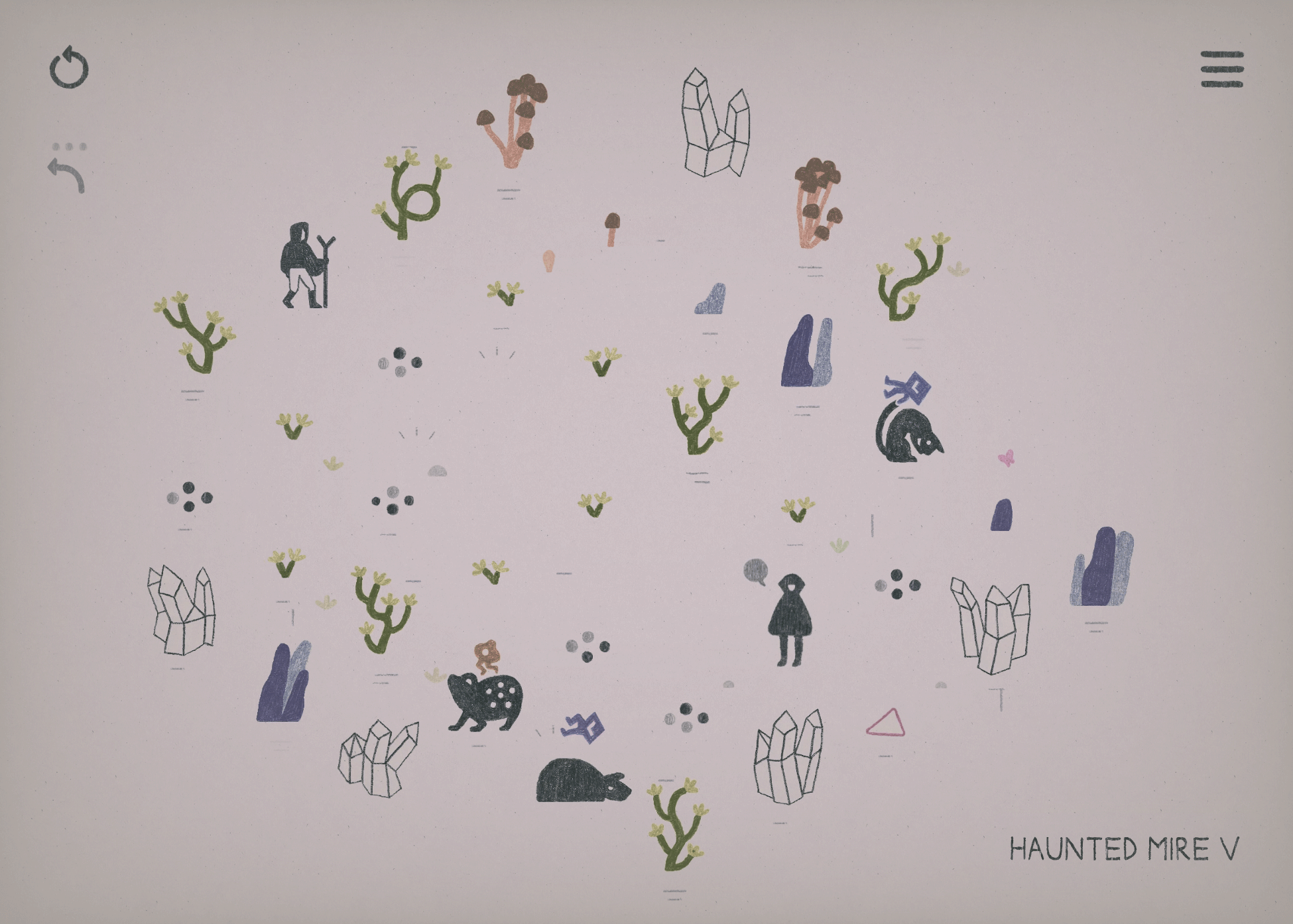
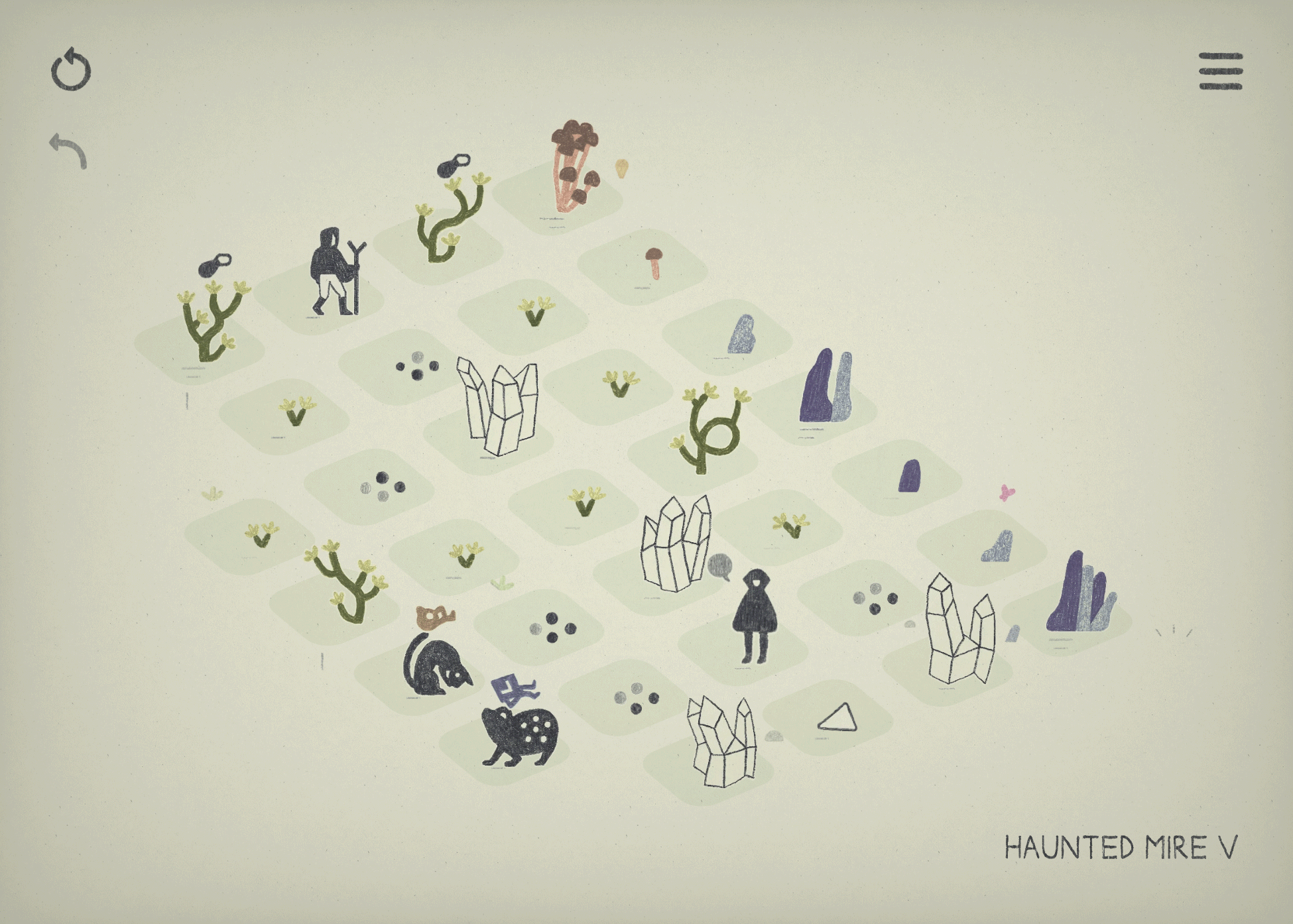
Before 1.2, Haunted Mire V had an additional monster and spirit. These made the puzzle more complicated, but not in a novel way and not in a way that changed the core aha! moment in the puzzle. The new version is focused on understanding one particular NPC interaction.
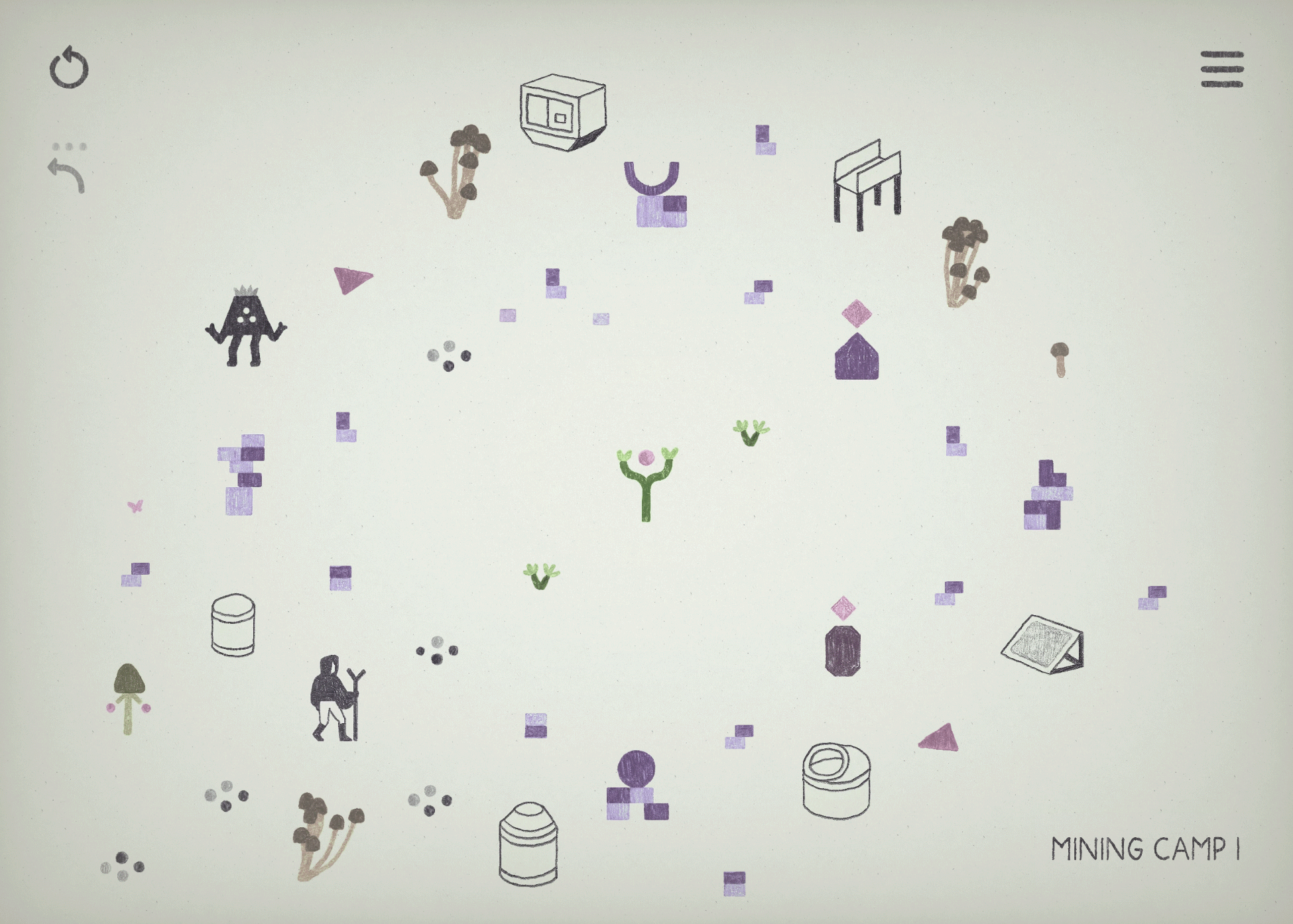
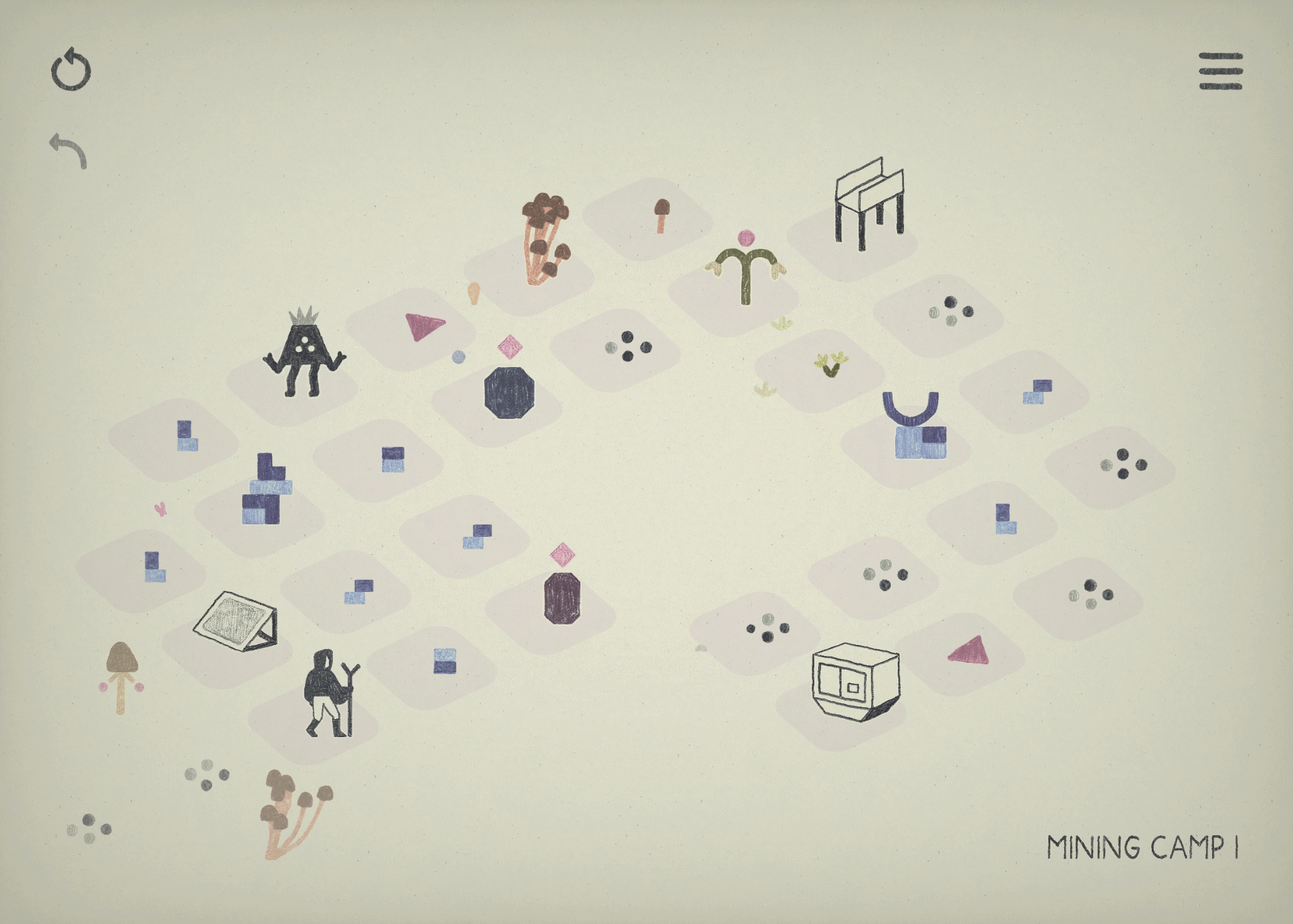
Solving Mining Camp I requires entering the level from multiple entry points. Unfortunately, it could be brute forced from the bottom direction only before 1.2 – again leaving players without an aha moment. The new version narrows the level in on it’s core concept and fixes the exploit.
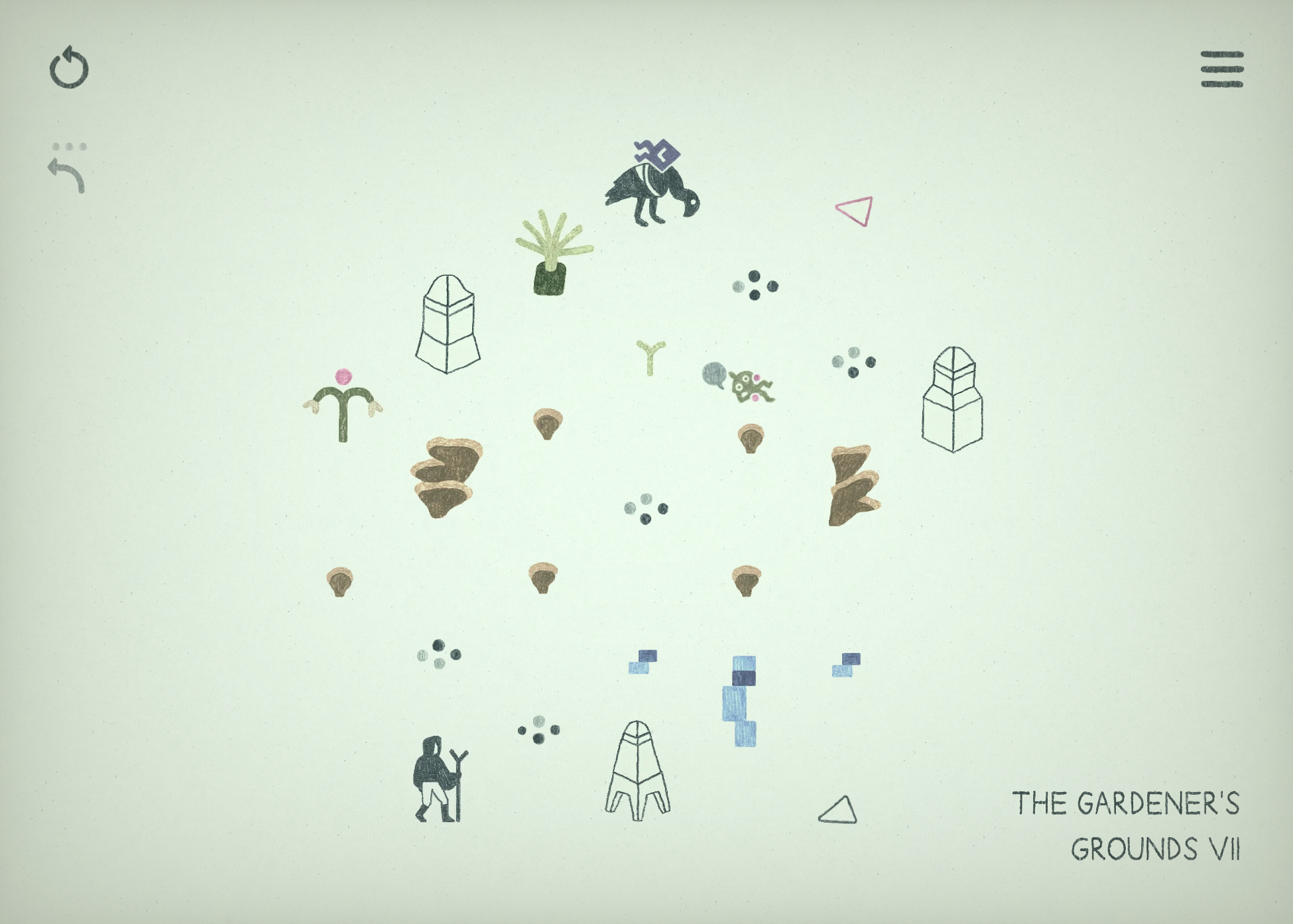
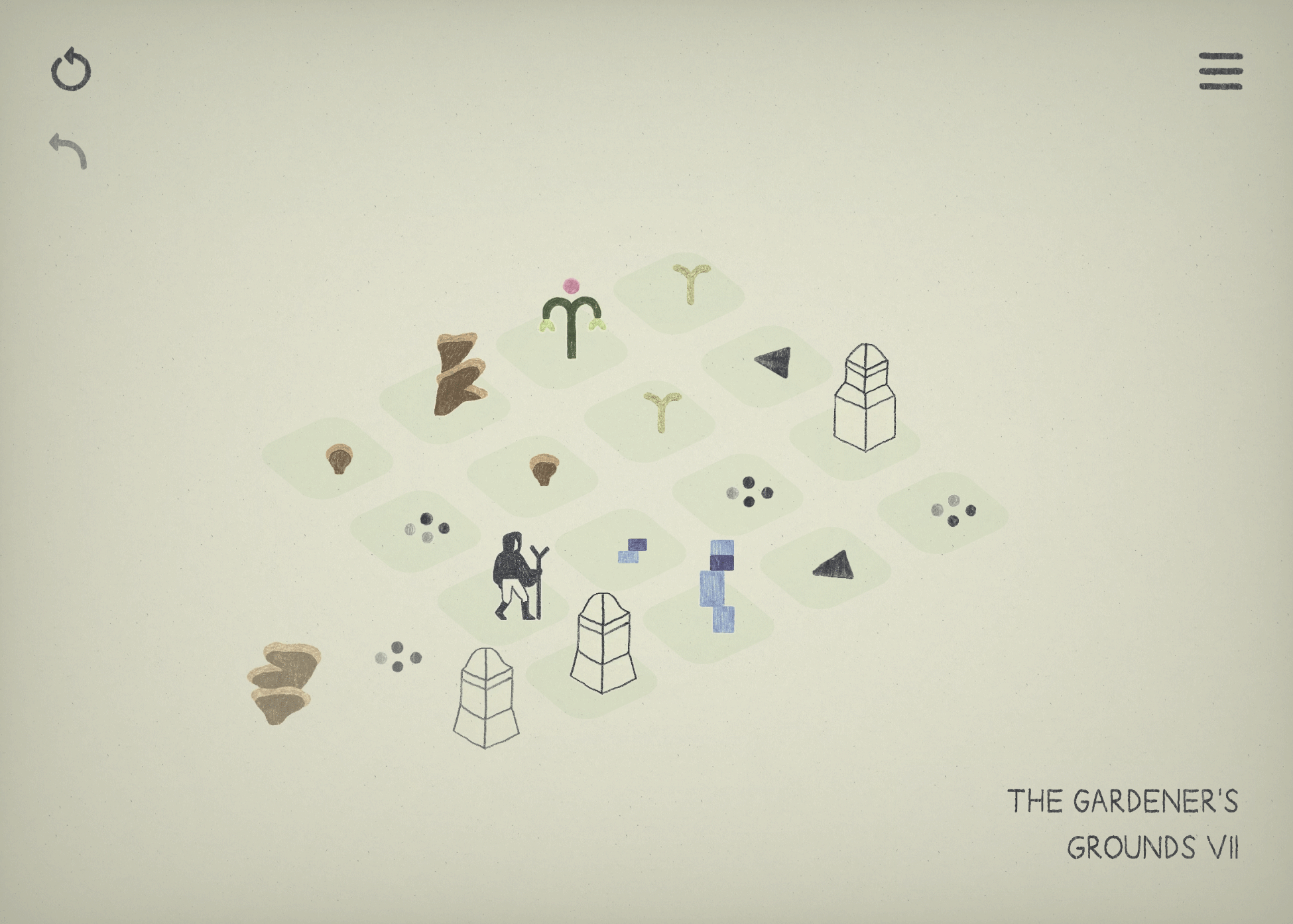
The Gardener’s Grounds VII is one of a handful of puzzles that we cut completely. This level was cut because it is solvable without even using the new power the player receives just a few groves prior, so it doesn’t teach the player anything new.
A couple unresolved Problems
Finally, there are two major fixable problems that I chose to leave be for now.
-
Wilderplace’s core mechanics are neither familiar, or clearly communicated at a glance. As a result, it’s not great streaming material. Viewers can’t follow along unless they’ve been watching from the start. Wilderplace’s obscurity also makes it hard to describe in ads and trailers. The right set of UI changes could make Wilderplace’s systems more intuitive (see Into the Breach), but it might come at the cost of the game’s ambiance and sense of discovery.
-
Wilderplace withholds too much until late game. We made a game where lots of small mechanics slowly build on each other. The game starts simple and linear, and ends deep and open-ended. Plus, the finale introduces a bunch of completely new mechanics like a morality alignment system, and characters that move across multiple levels. The slow-build unfortunately means many players never get to the really interesting stuff. It’d be great to rework the game world so the player engages with the exciting end-game systems earlier and more frequently. This would be an invasive change, so I decided to hold off.
Try Wilderplace 1.2
The new version of Wilderplace is available now on Steam. I hope this post inspired reluctant gamers to give it a try, convinced a few fans to give it another play through, and maybe motivates a few other game developers to give their released game another pass. I’m really curious to see what kind of impact these changes have on the game’s player base.
Thanks, Saman 🌱